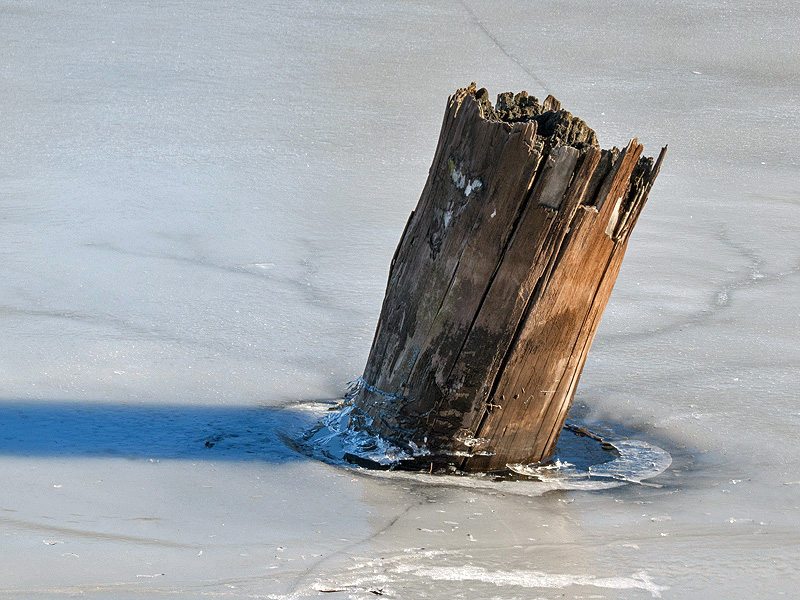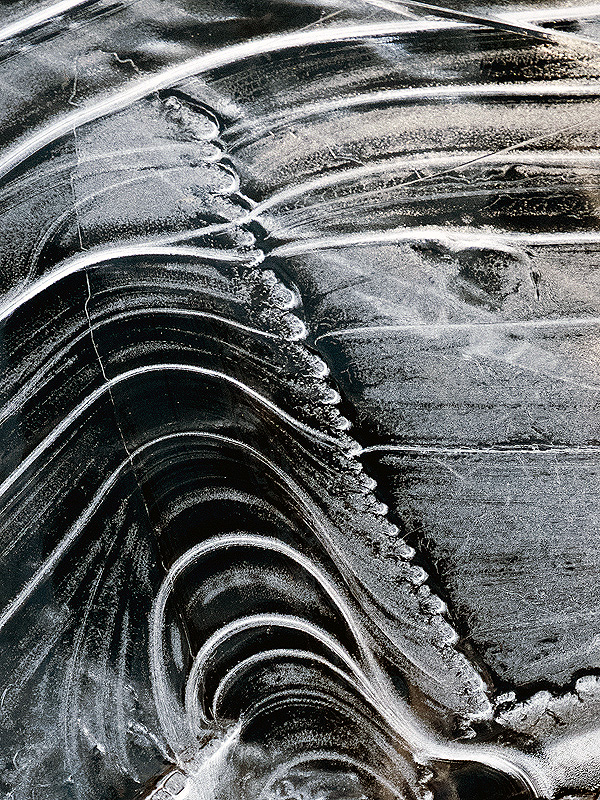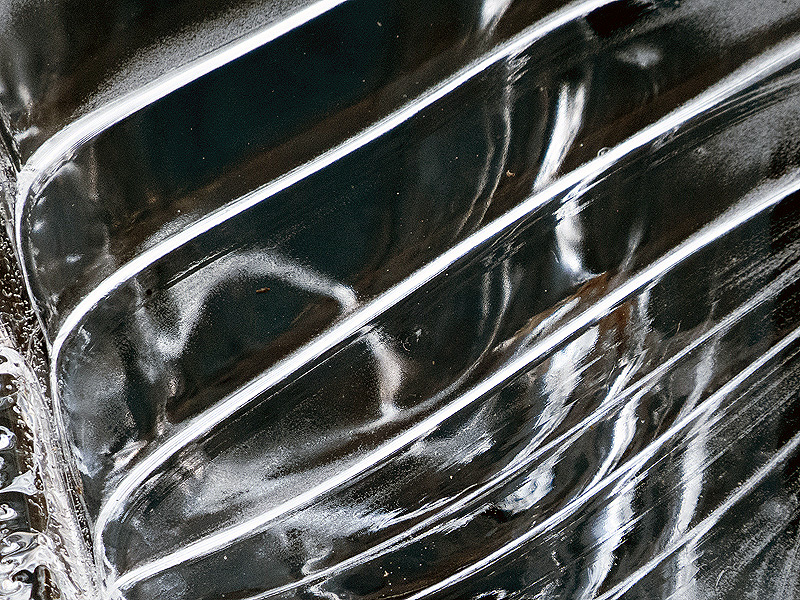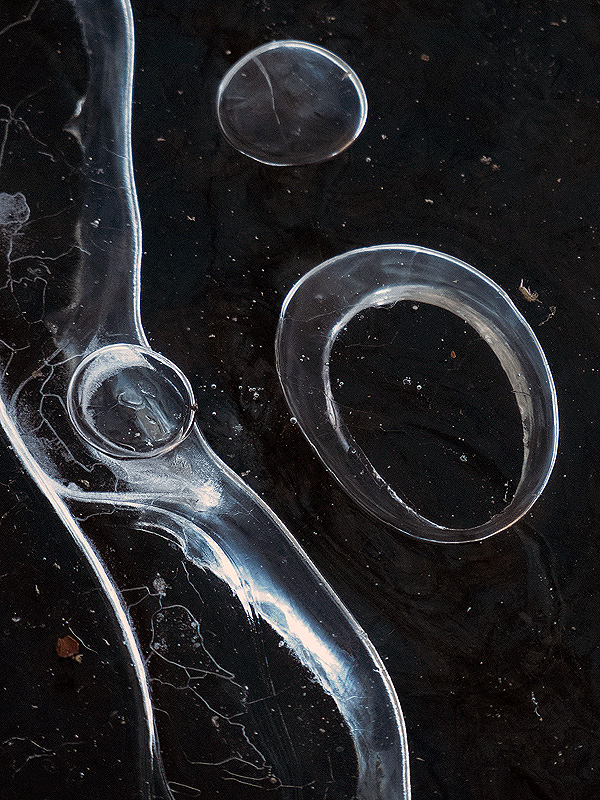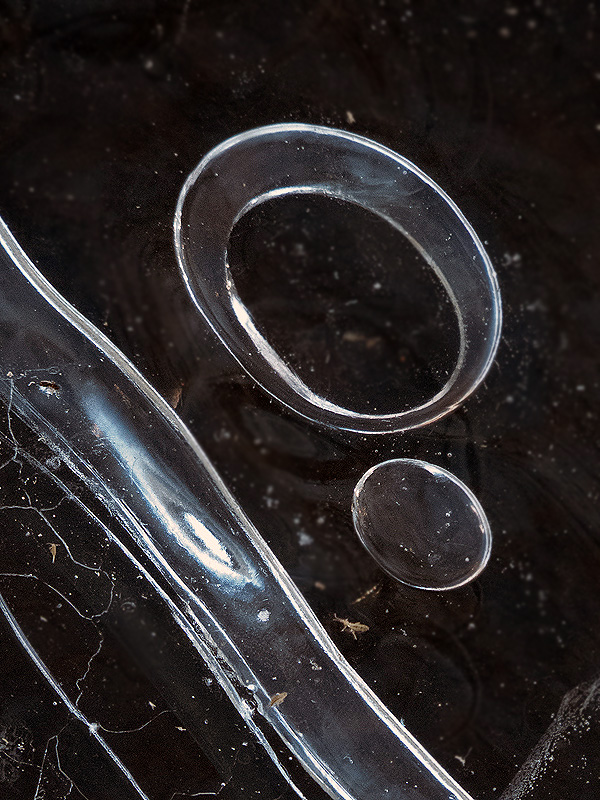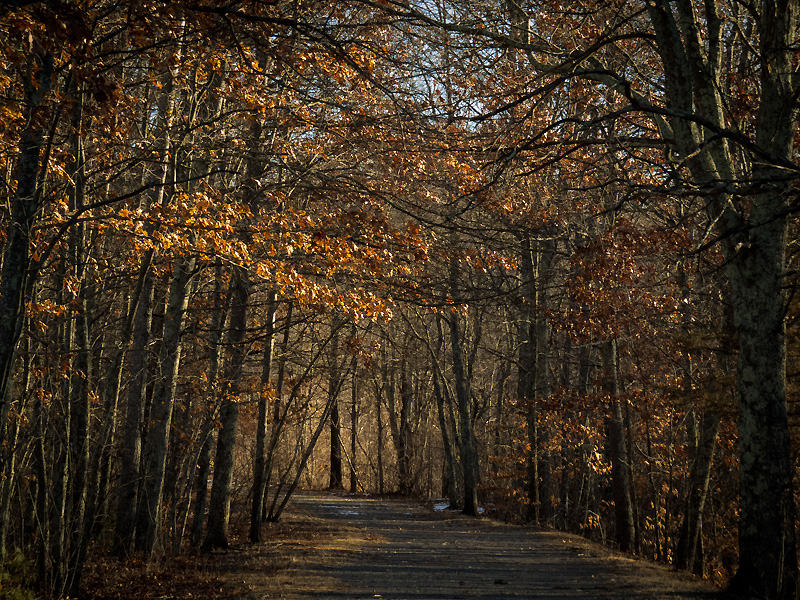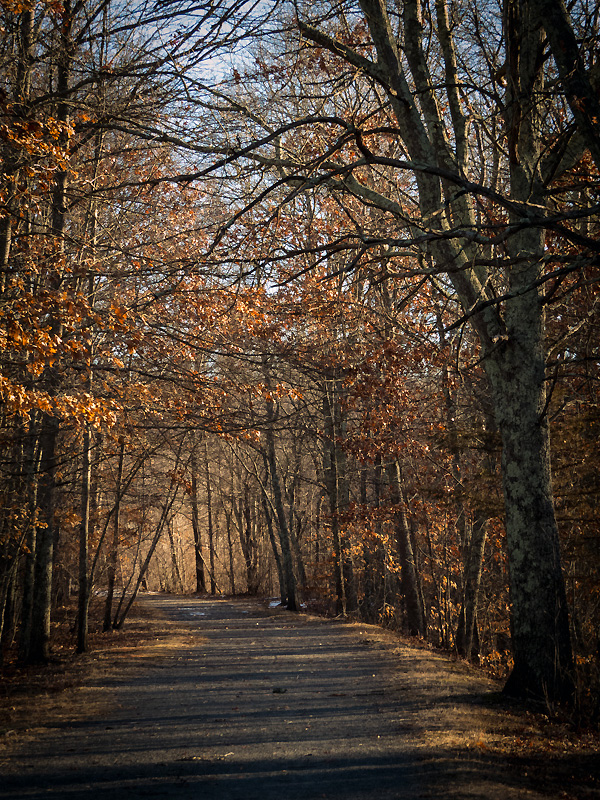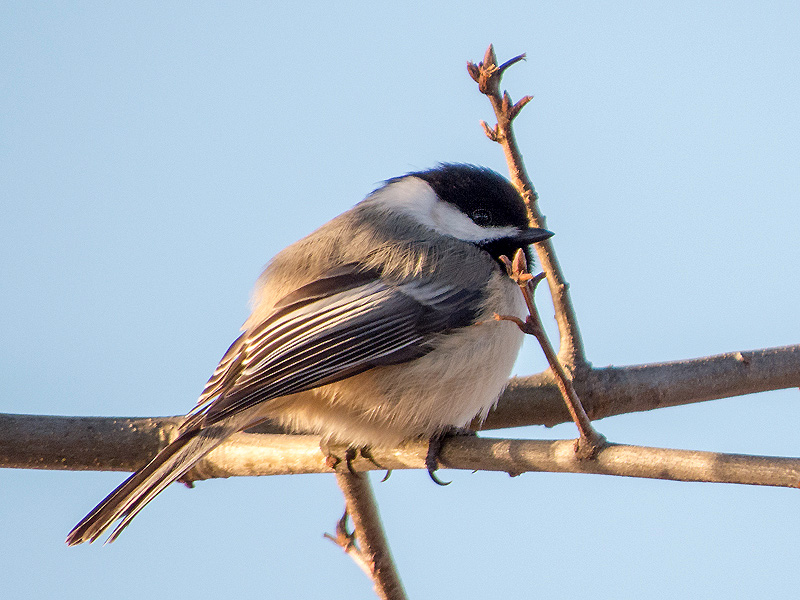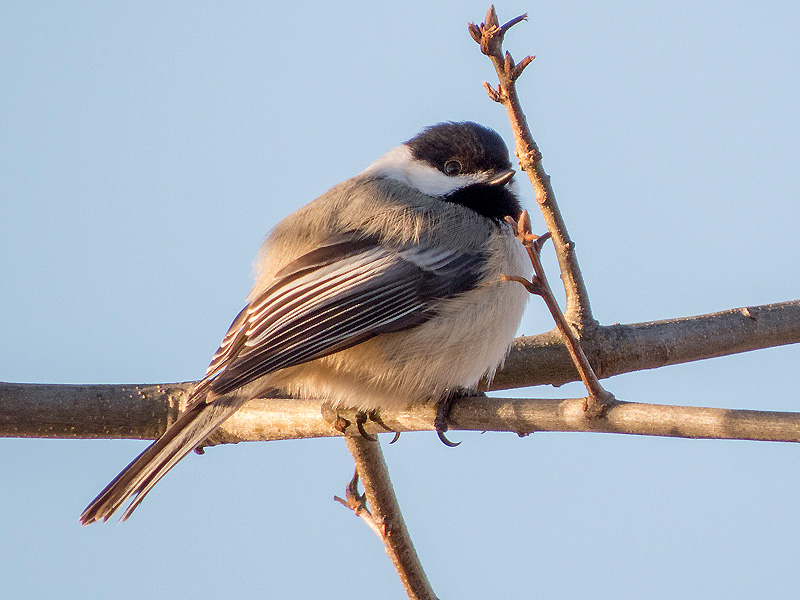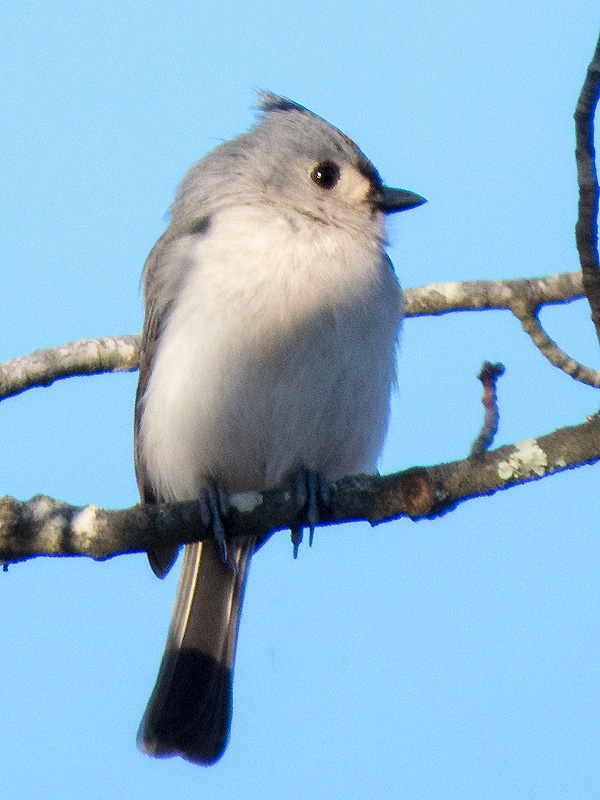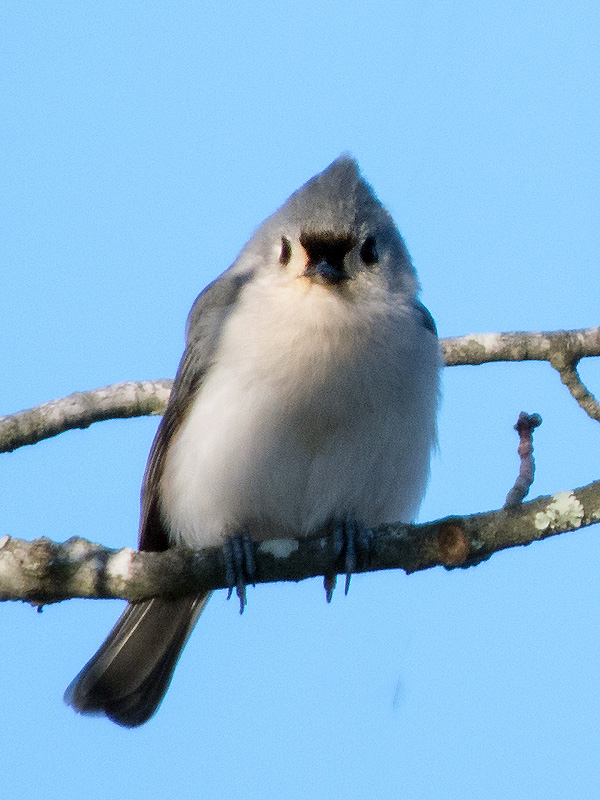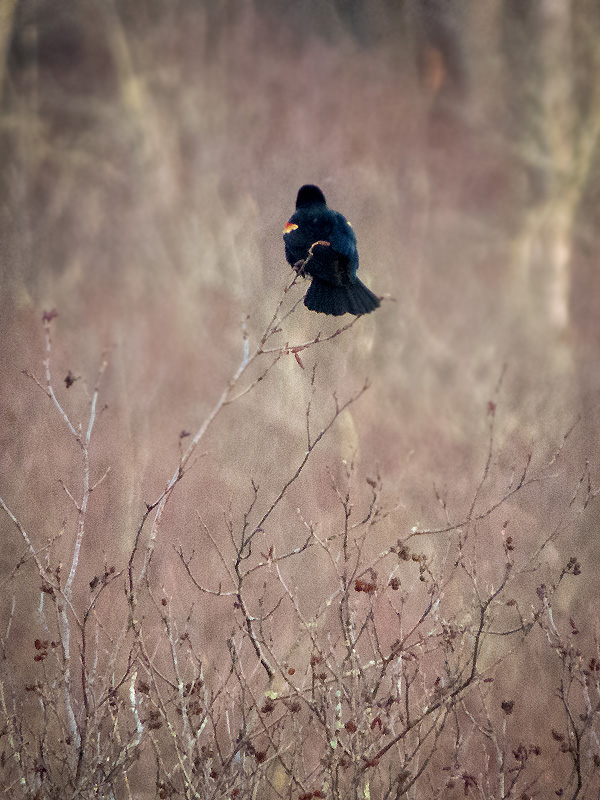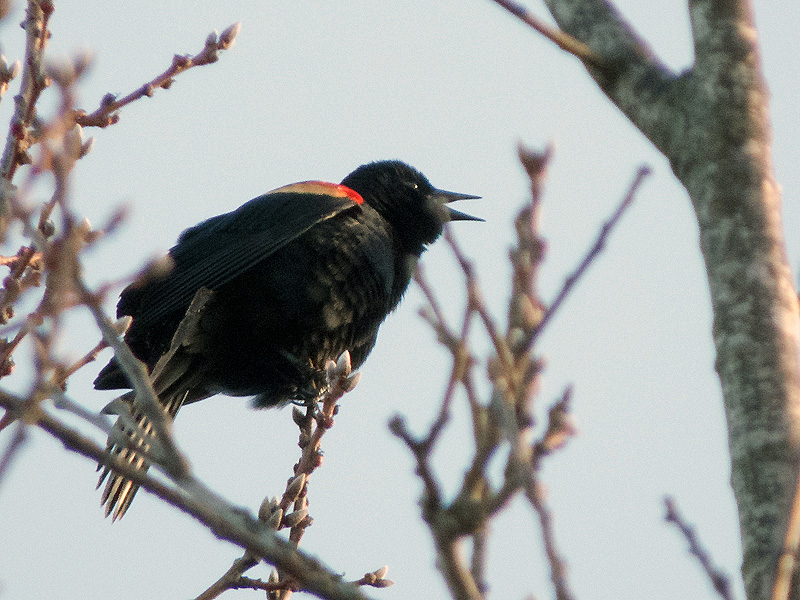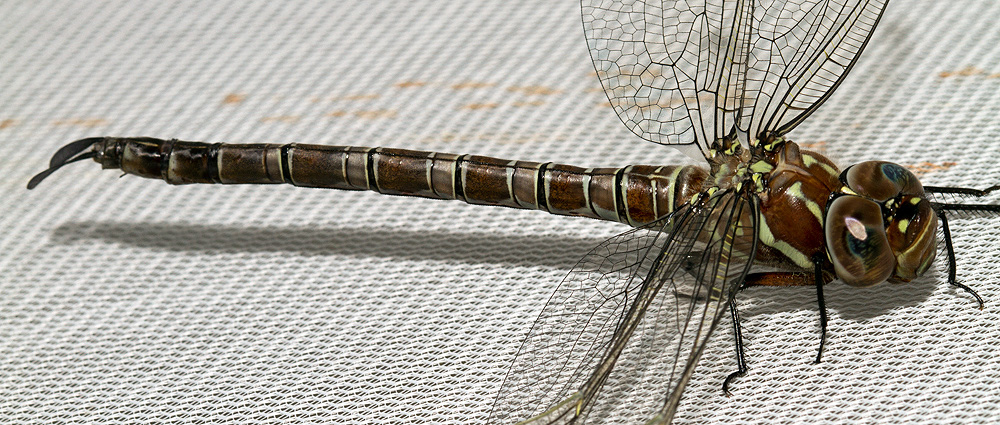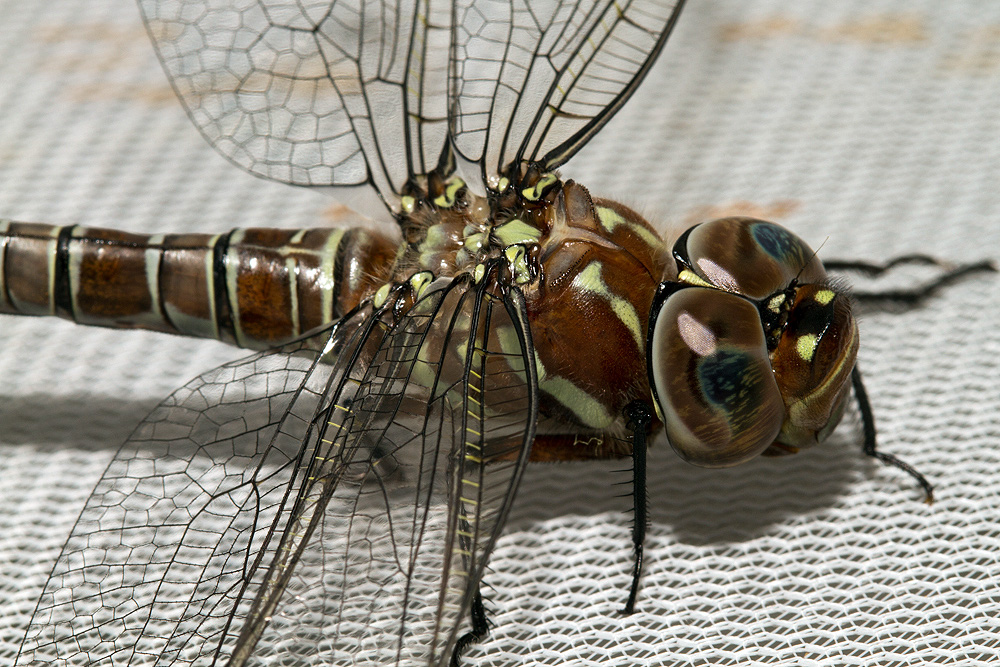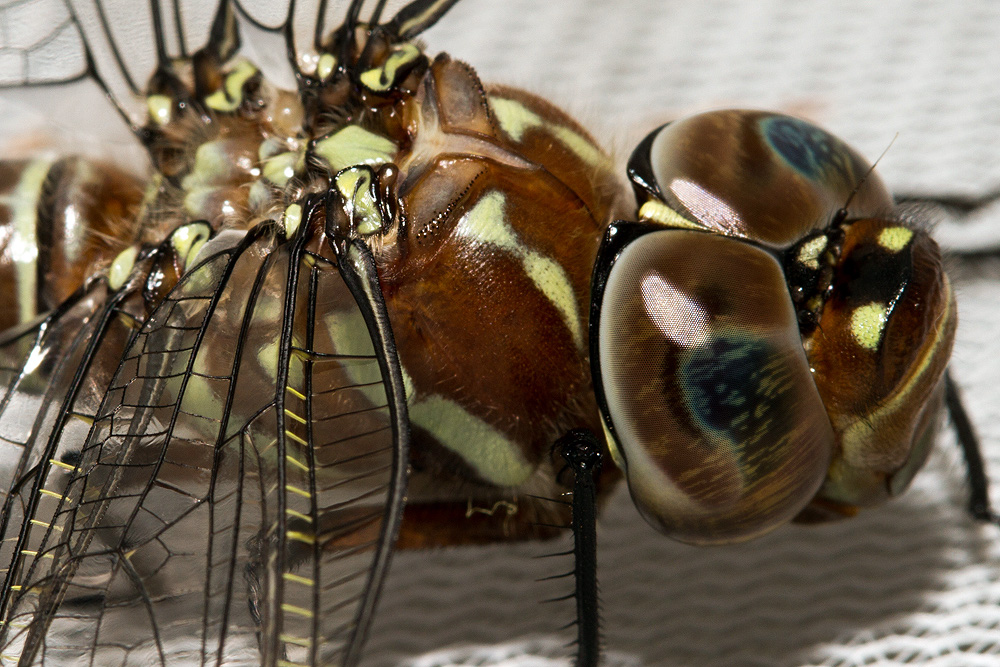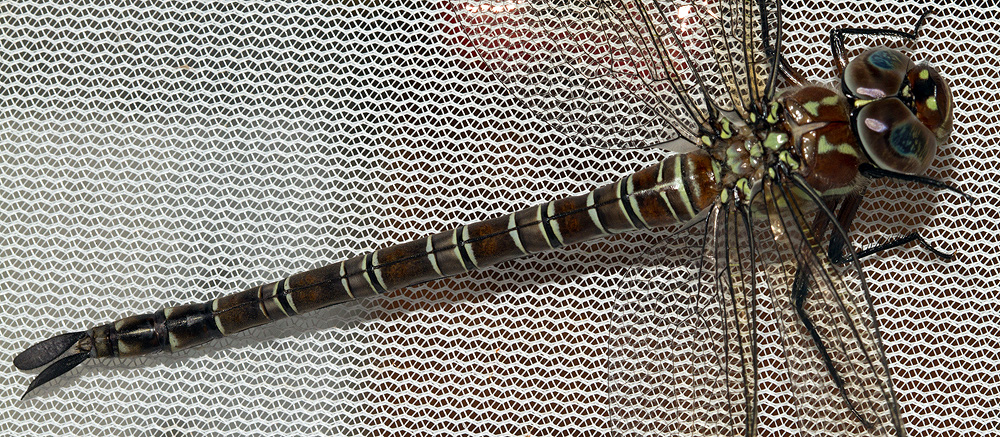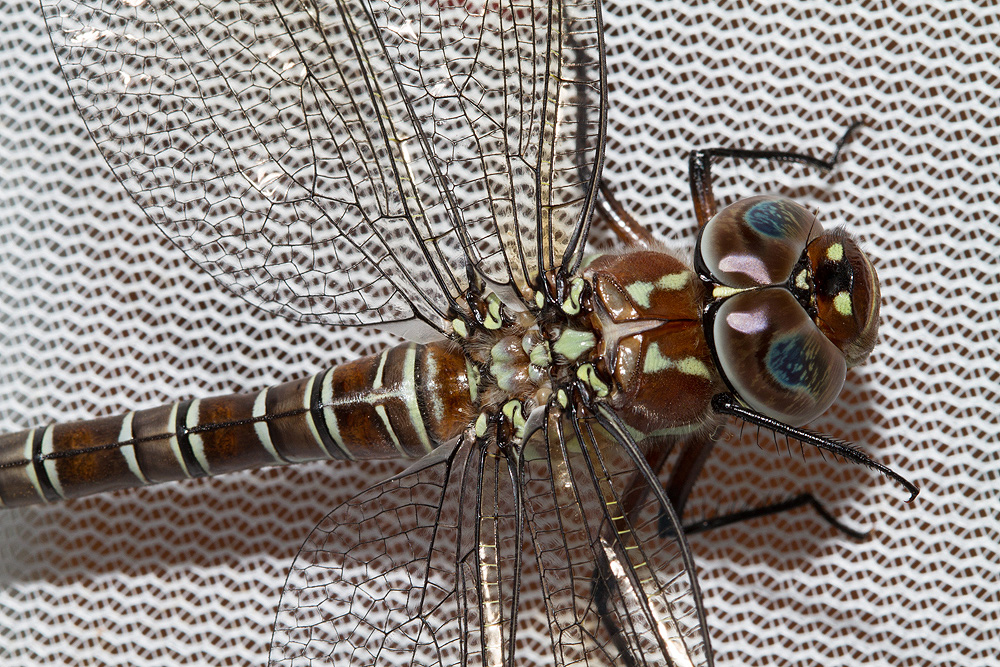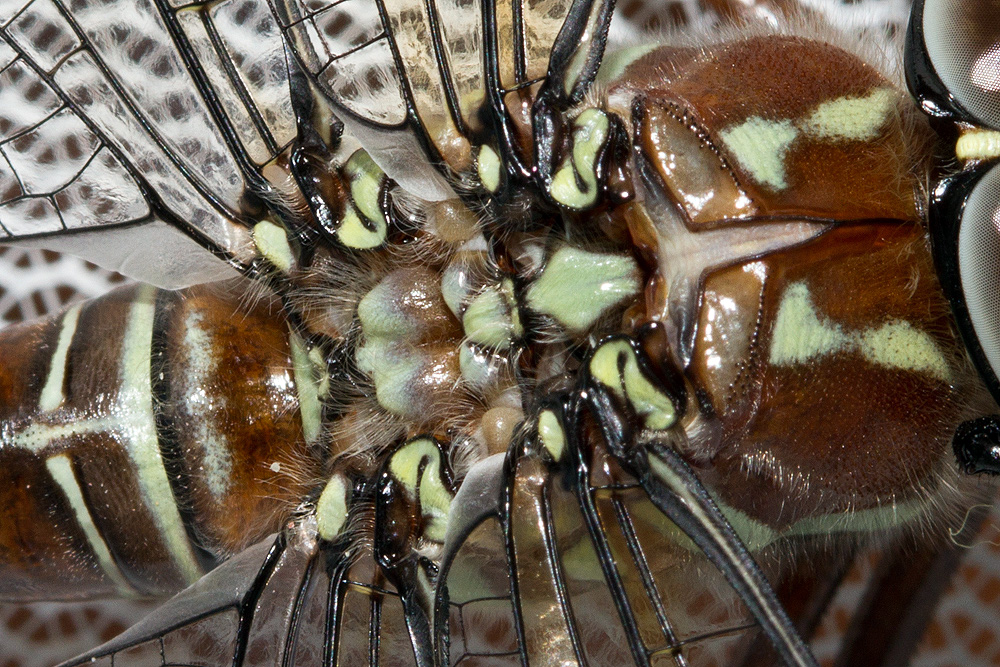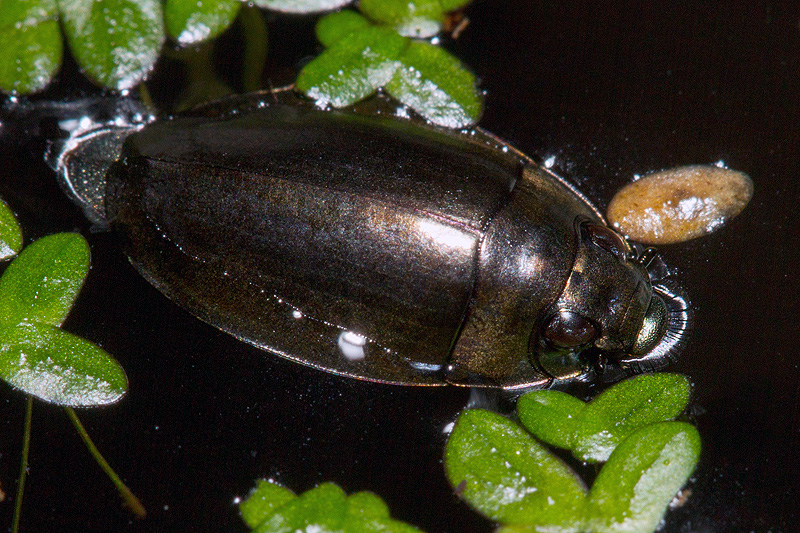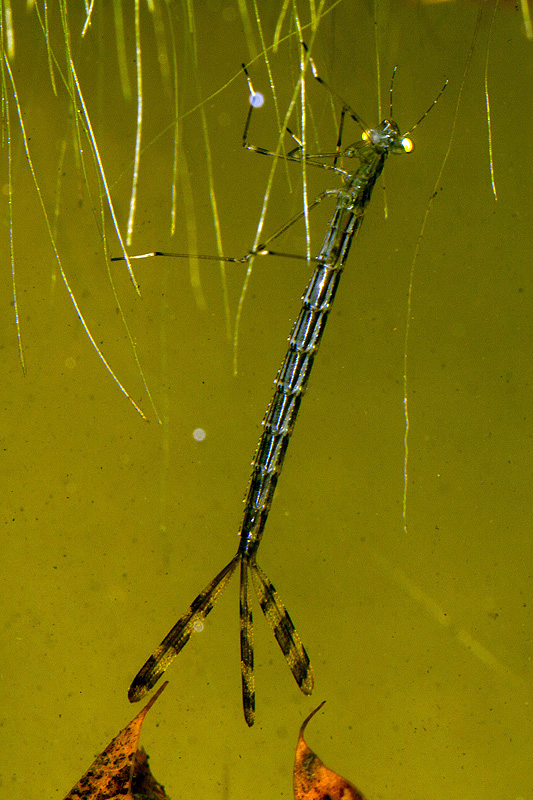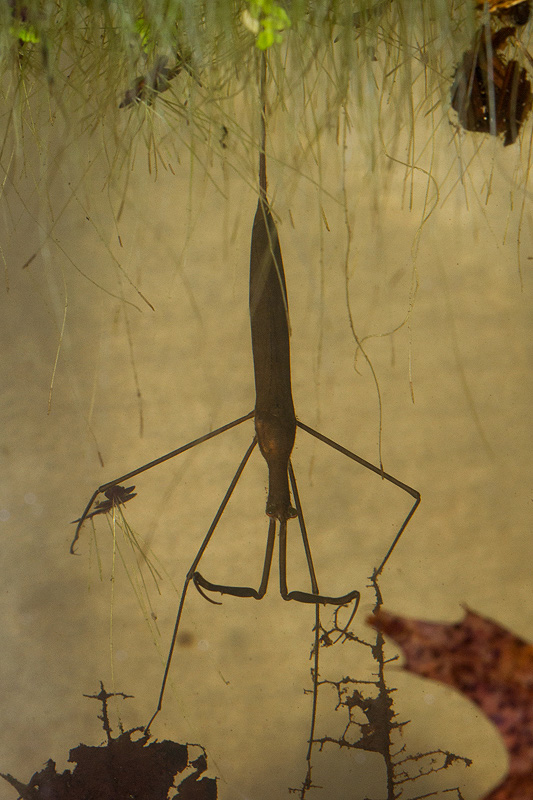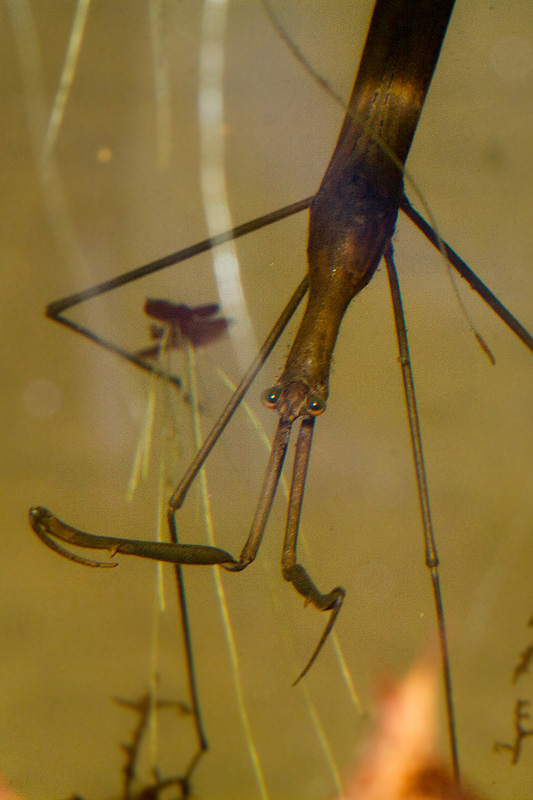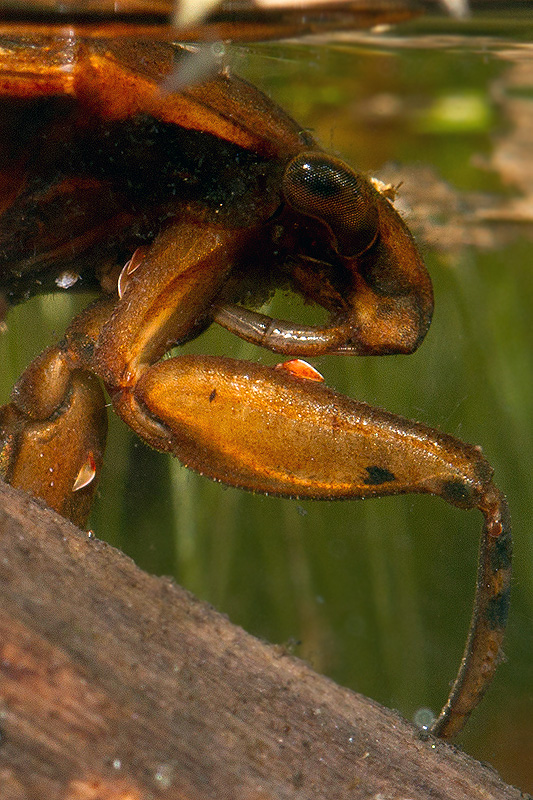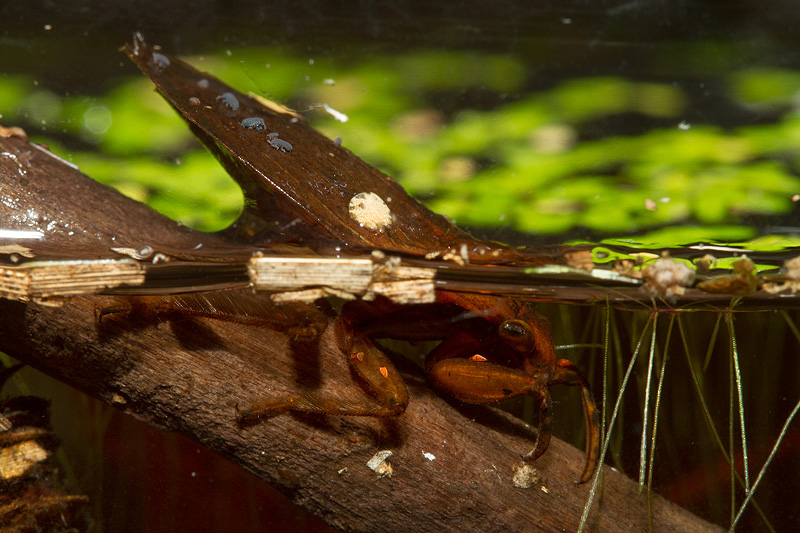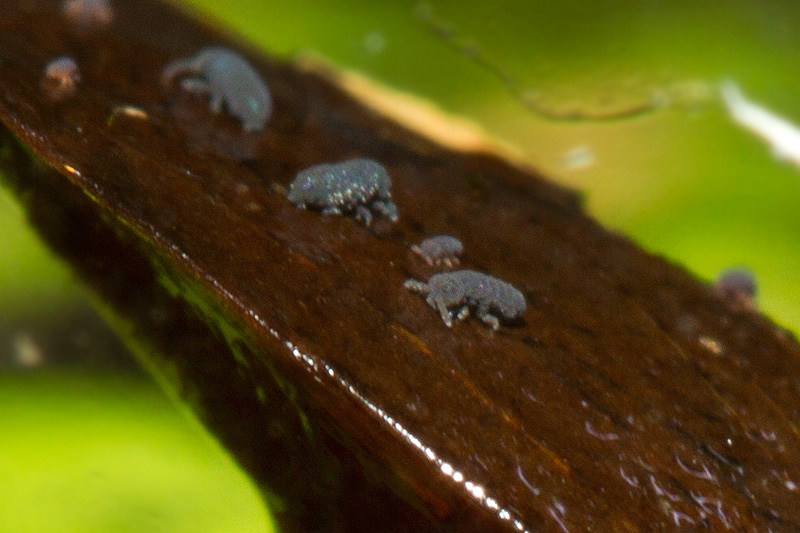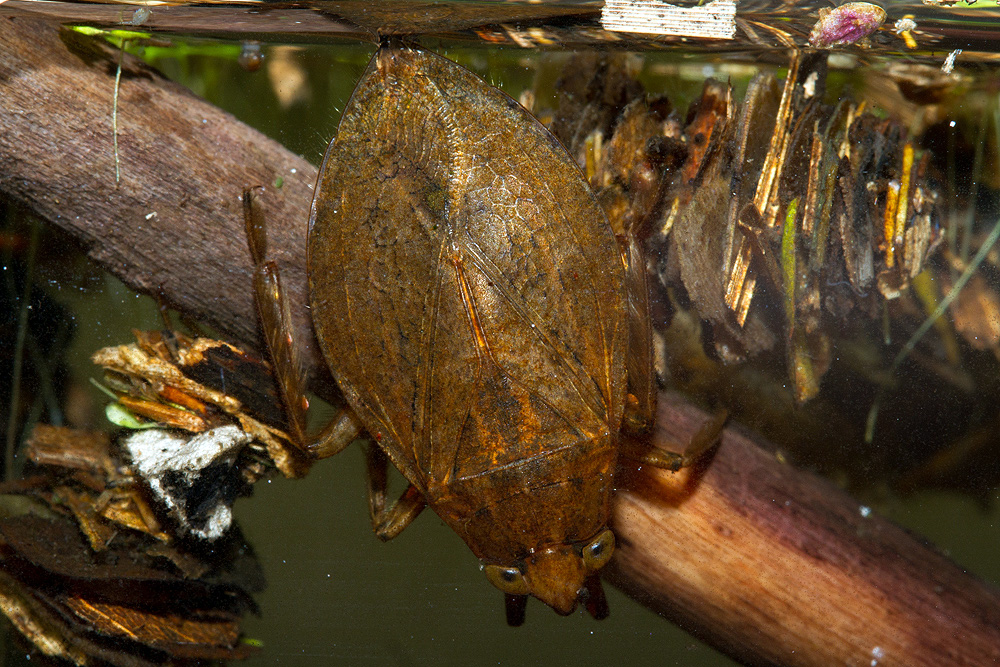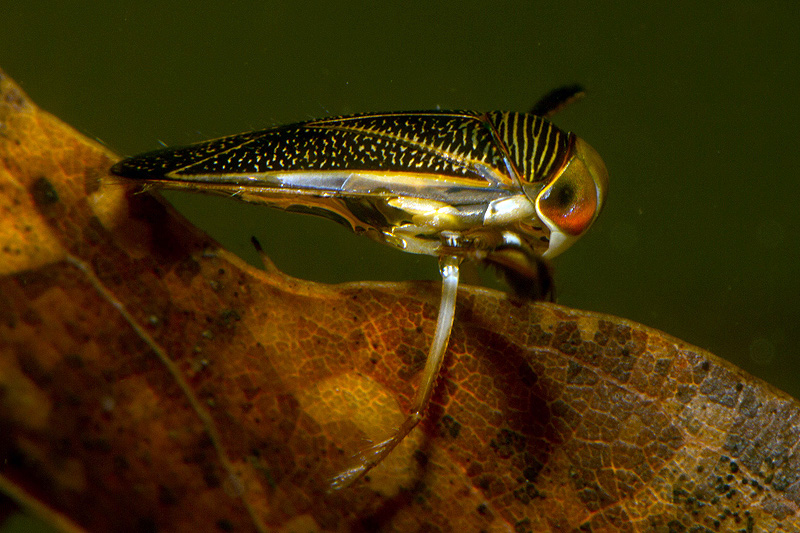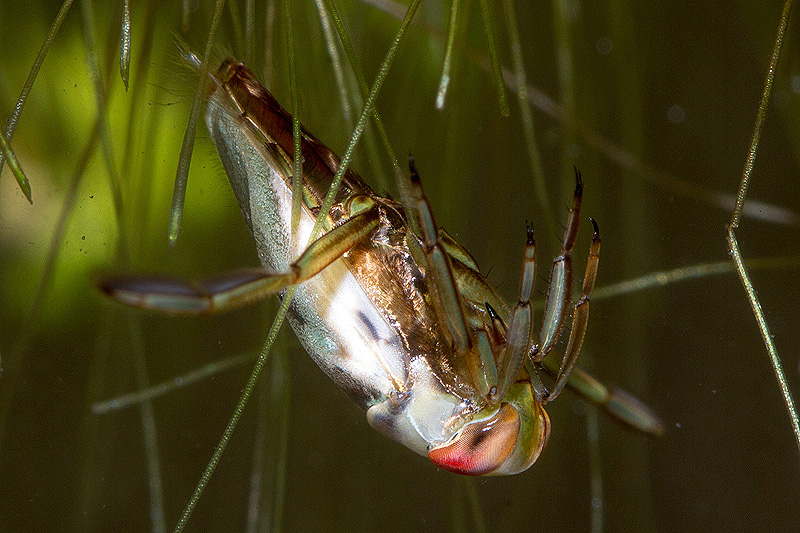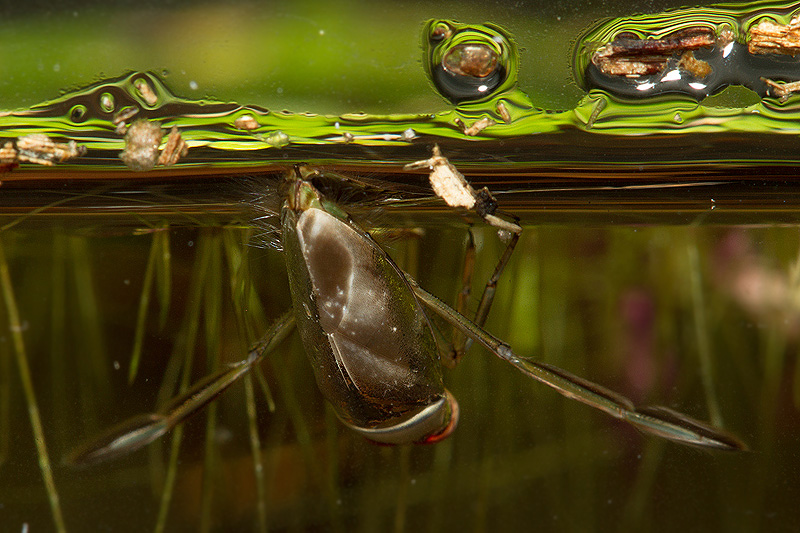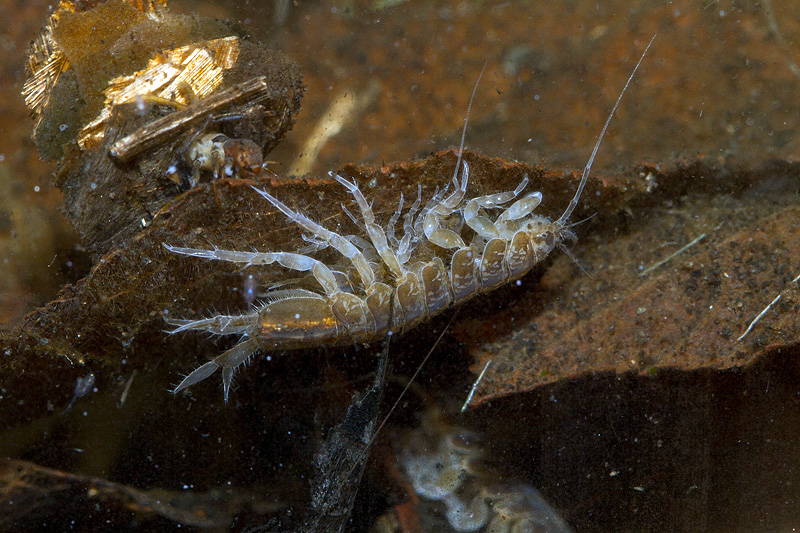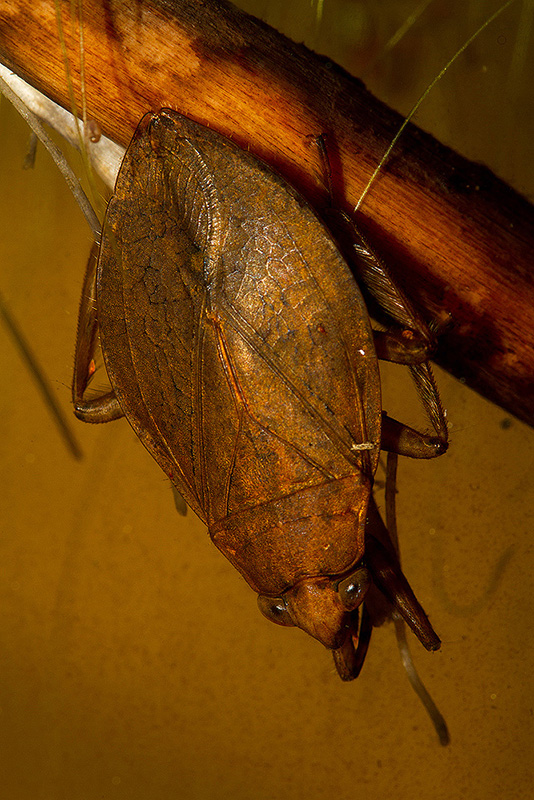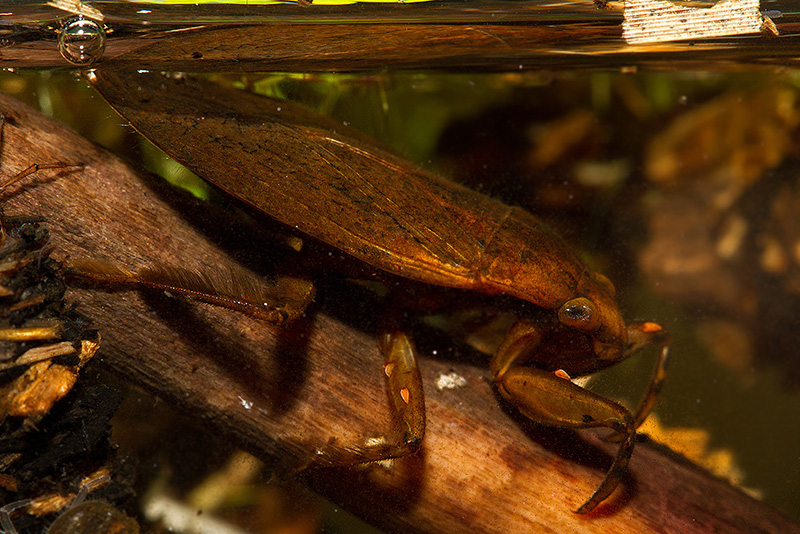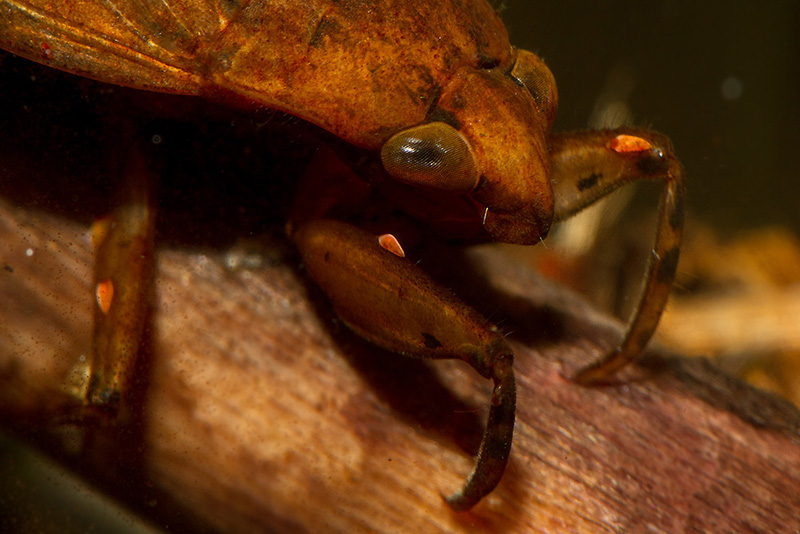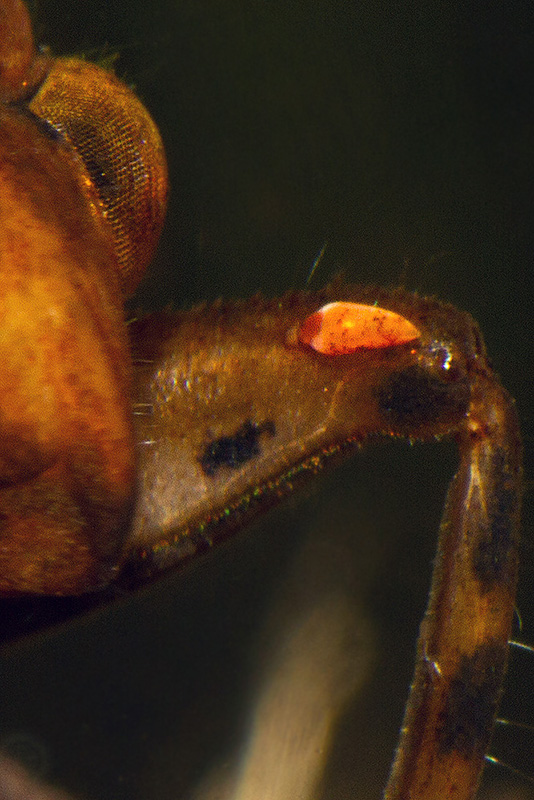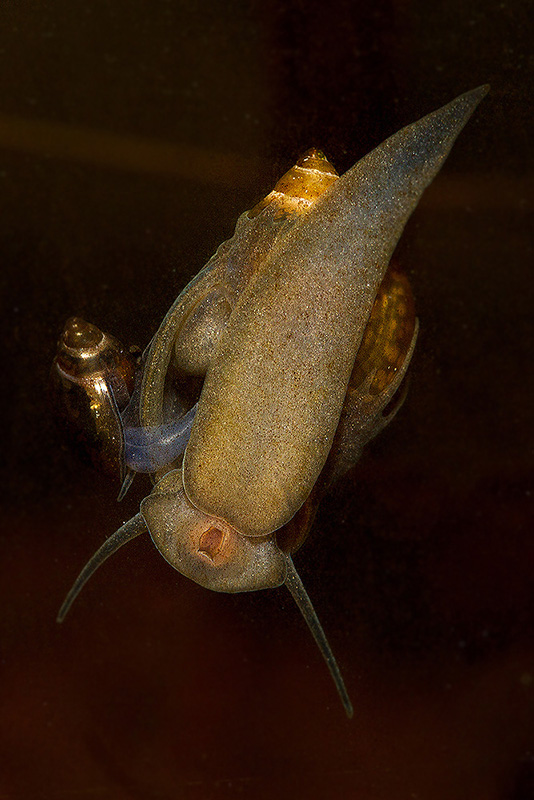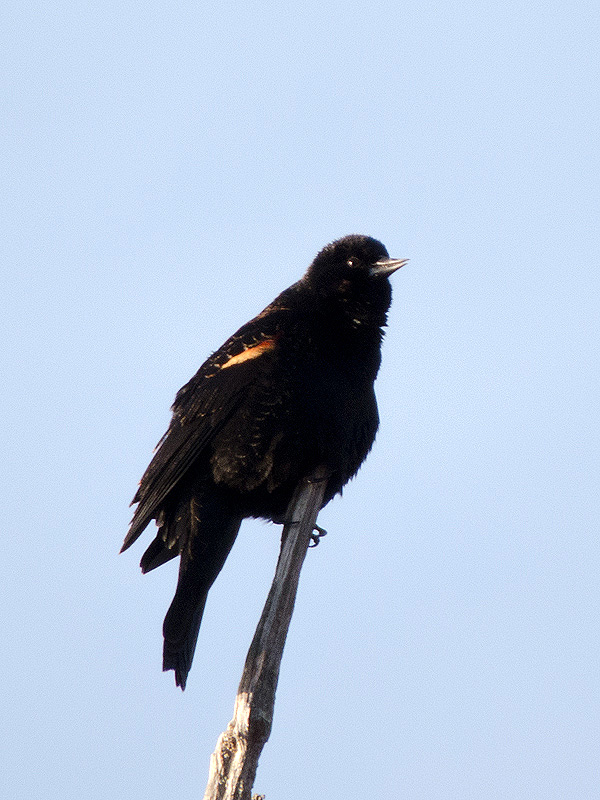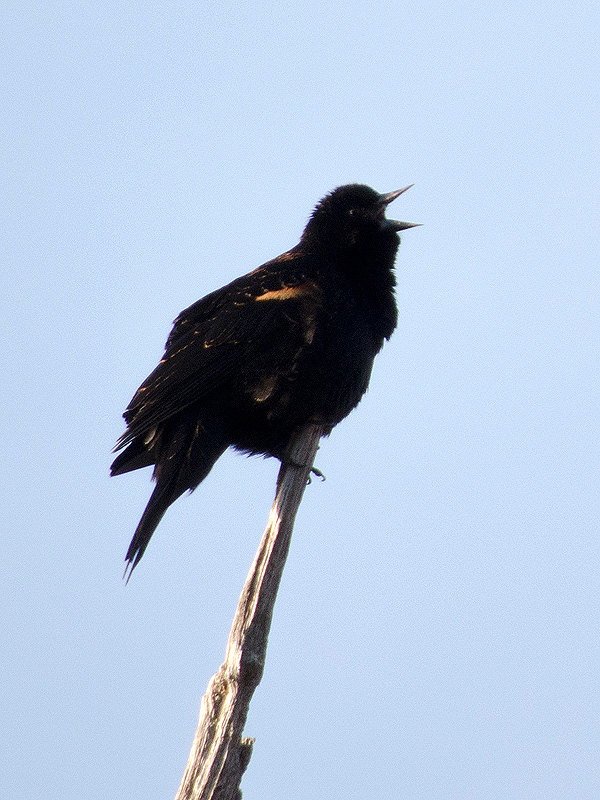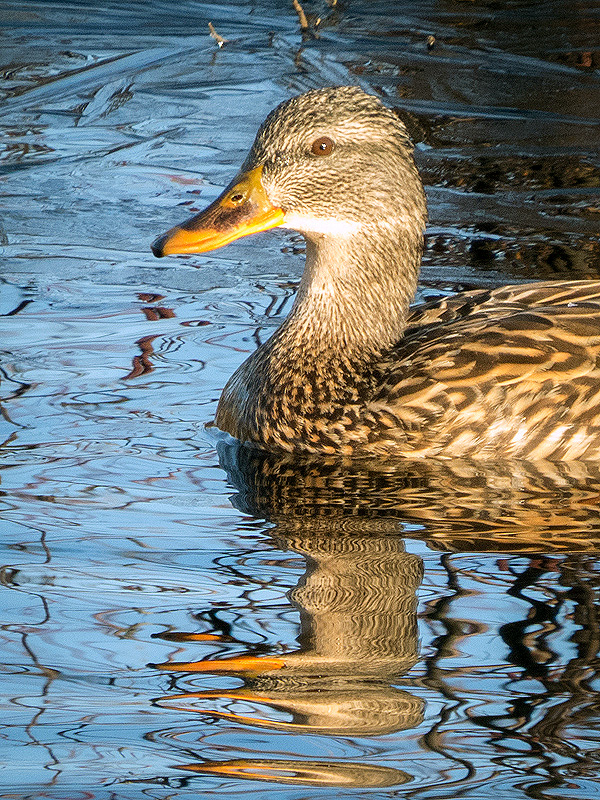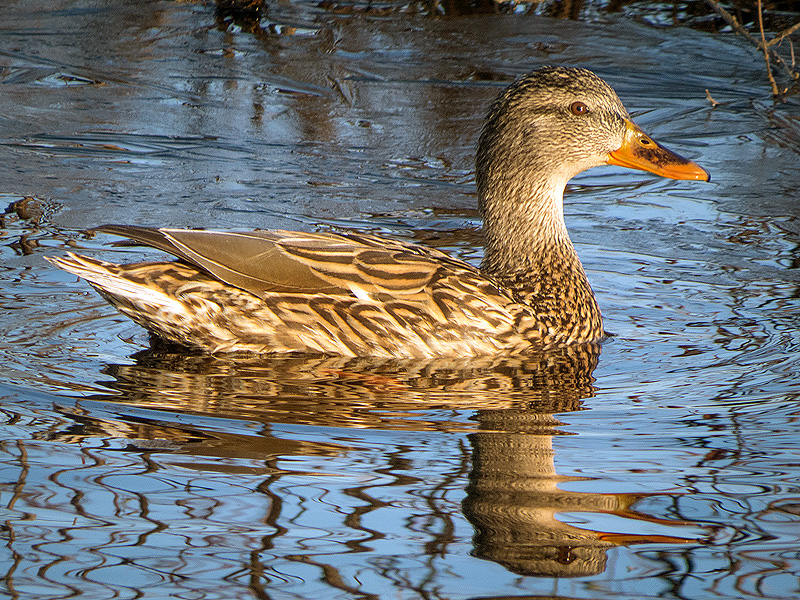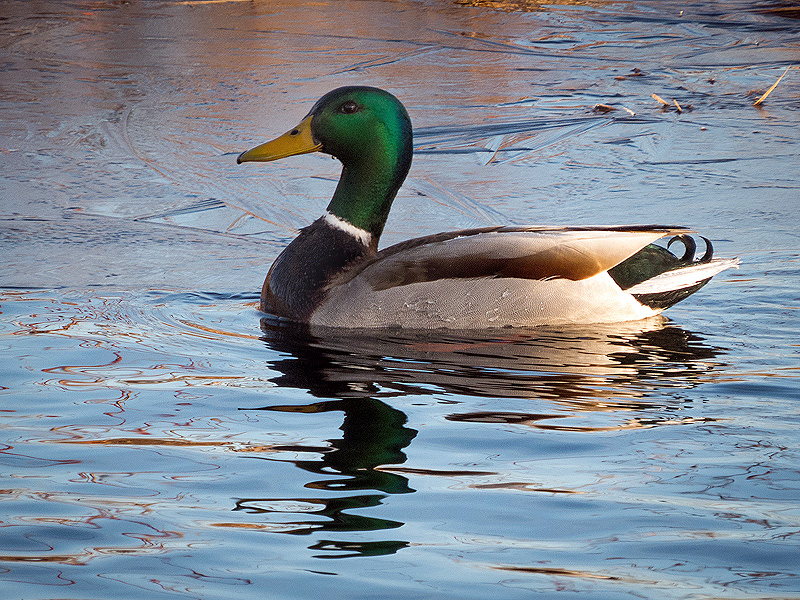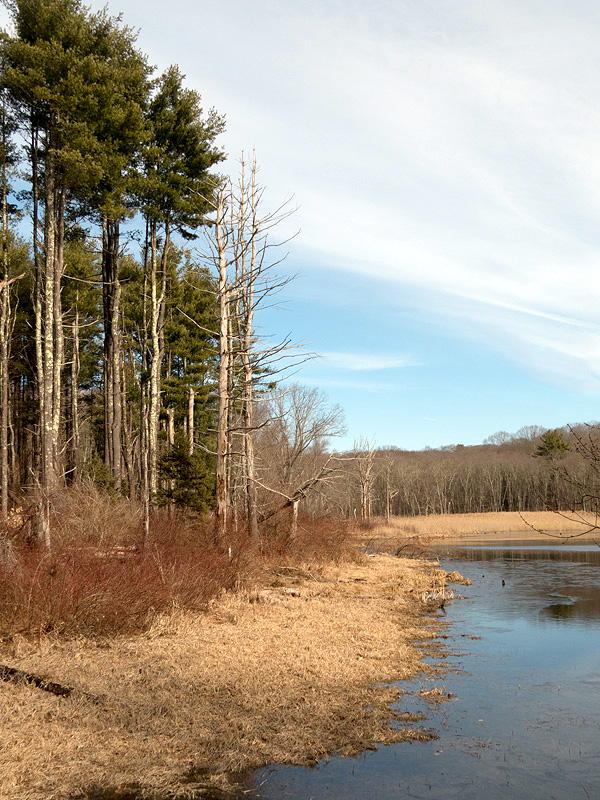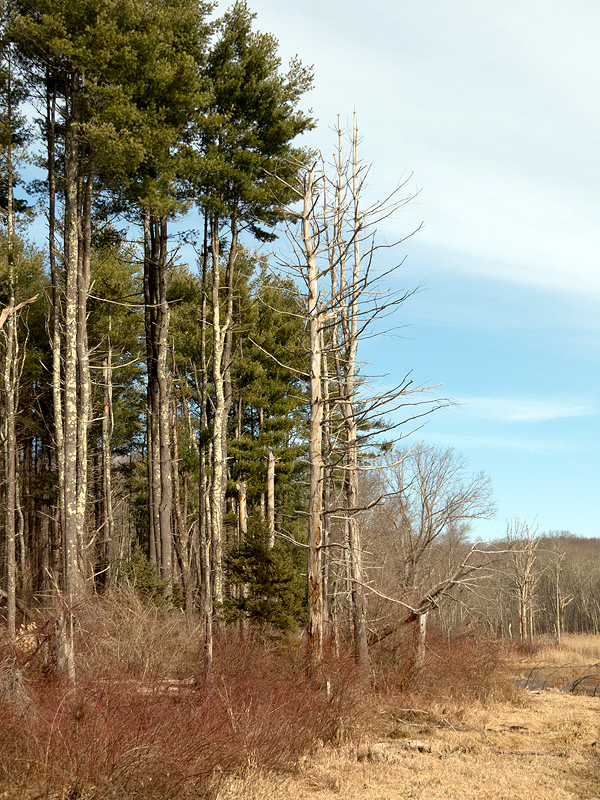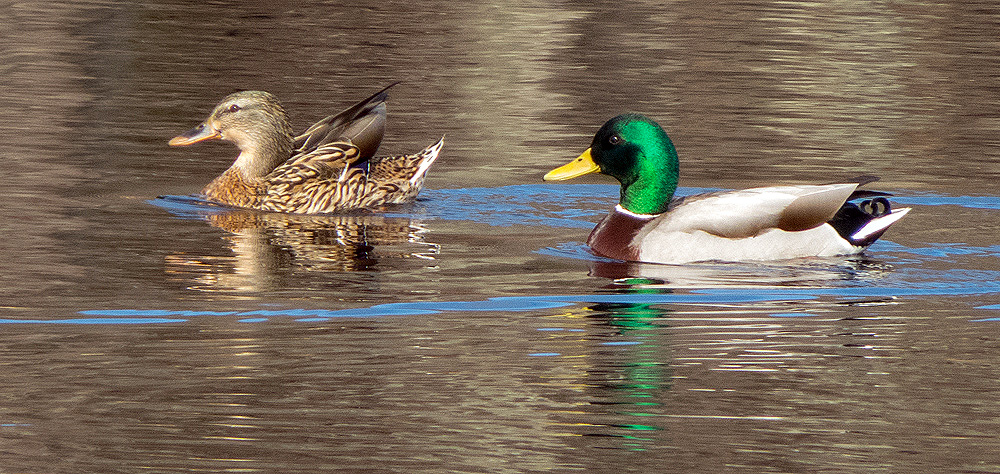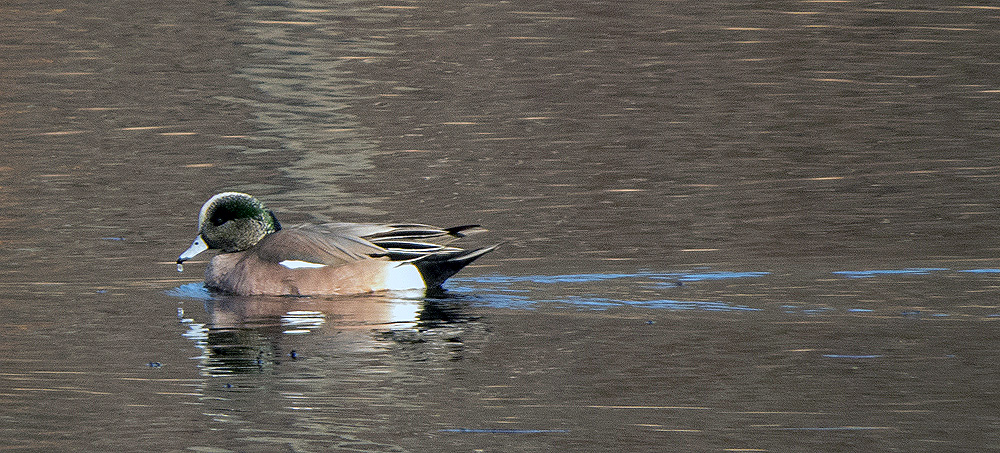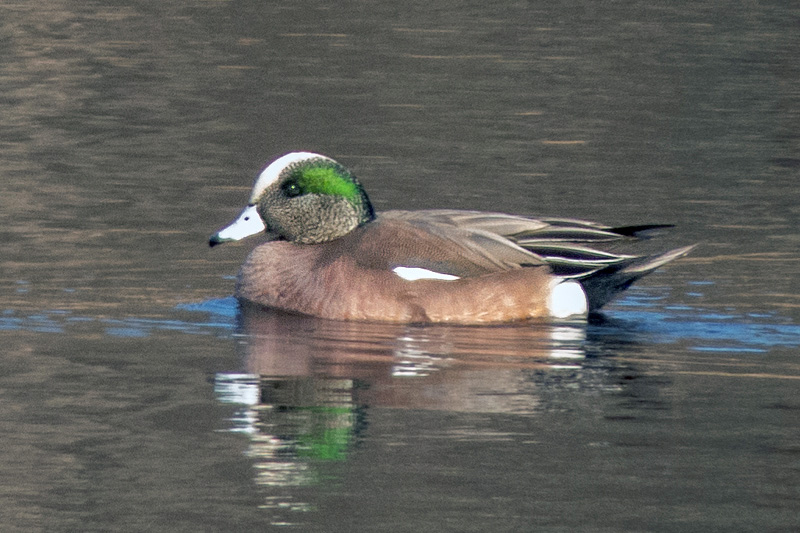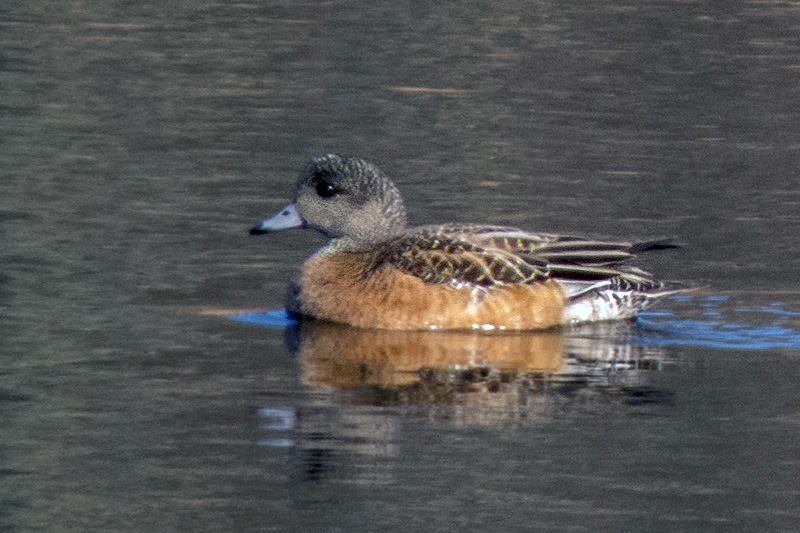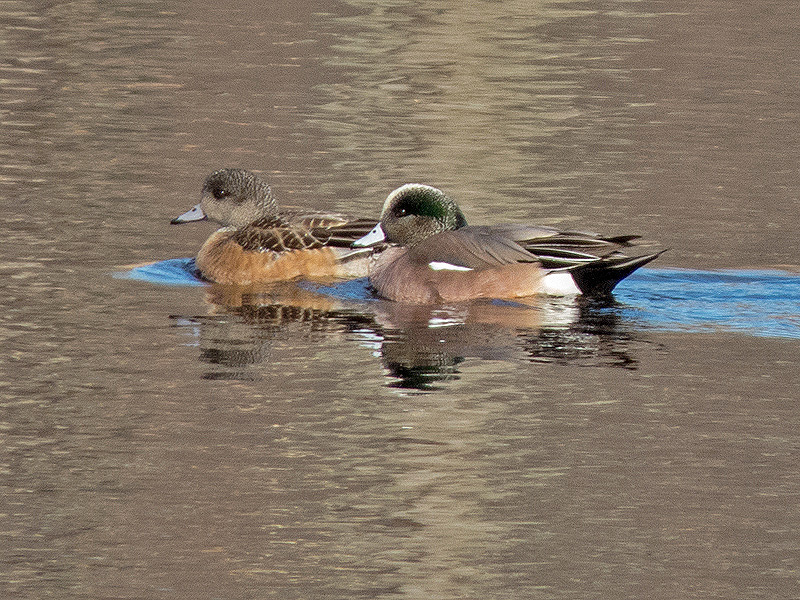Along the Air Line... 2015-2016 - Winter, Part 5 The Air Line Trail in Eastern Connecticut - Stan Malcolm Photos |
mHome Page Stan's FlickR Albums |
February 18th. Early afternoon, roughly 32 degrees.. |
Ice patterns. |
|
Note the Springtail (Order Collembola) to the right of the large bubble. |
Another Springtail below the small bubble. |
|
February 19th. Much of the trail is snow and ice free, except wooded areas not aligned with the sun. |
I spent much of today's walk removing sticks and branches that fell during the last two storms. |
Black-capped Chickadees (Poecile atricapillus) were singing their spring "fee bee" call. Listen to the "Typical Song" clip here. |
|
|
February 22nd. At least three male Red-winged Blackbirds (Agelaius phoeniceus) at the marsh. |
As is usual, as more birds arrive some start calling closer to or directly above the trail. |
February 23rd. The dragonfly that molted to the adult stage today, after living in my aquatic tank for nearly a year (and it was probably almost a year old when I collected it from the marsh last spring), is a female Swamp Darner (Epiaeschna heros). Beautiful markings. |
|
|
Dorsal views. |
|
Wing articulations. Muscles that control motion are attached directly to the wings in dragonflies so the articulation points are quite complex. Other insects orders like Lepidoptera (for example) control wing motion indirectly: the muscles attach to the thoracic body wall. Flexing the body wall moves the wings. |
With the top predator gone from the tank, and warm weather having melted some of the ice at the marsh, I went collecting. Many insects remain active in the icy water. This is a Whirligig Beetle (Dinutes sp., Family Gyrinidae). Lots of adaptations for mainly surface living (though they do dive if disturbed enough). Eyes divided: half above water, other half below. Essentially four eyes. Each pair adapted to see best in air or water. Fringe of hairs at the front interesting. Surely sensory, picking up surface vibrations. As the beetles paddle around, they send out a bow wave that is reflected off objects in their path and picked up by their antennae - much like radar or sonar. This is how the beetles locate prey. Fish ignore them, even though they often cluster in great numbers at the surface. The reason is that the beetles emit a noxious fluid when captured, causing fish to spit them out. |
A Damselfly nymph (Order Odonata, suborder Zygoptera). Note the 3 feather-like gills and the glowing eyes. I assumed the glow was a reflection of the camera flash and like a cat's eyes, the damselfly's eyes are adapted for low light. Even in shadowy room light the eyes appear bright, so I'd say they're making very efficient use of whatever dim light penetrates their environment. |
A Water Scorpion - not a scorpion but a true bug (Family Nepidae, probably Ranatra fusca). A long siphon (breathing tube) out the back end is periodically raised above the water surface to replenish the insect's air supply. Note the "raptorial" (grasping) front legs used to catch prey - including small fish - and guide it to the piercing beak. The bug injects digestive fluids into the prey, then sucks up the dissolved contents. |
A better view of the raptorial front legs, reminscent of mantids. |
A "Toe Biter" (Belostoma testaceum), "one of the smaller giant water bugs" (as described by Tom Murray in his "Insects of New England and New York"). Like the water scorpion, it has raptorial front legs and a painful bite. (Something I'm glad never to have experienced.) It's about 3/4" long, compared to the 2.5" species which looks like a bat in flight. |
Side view of the "toe biter". Note the little grey things on its back. |
Close up shows them to be Springtails (Order Collembola). The largest of these is roughly 1mm long. They repel water and weigh next to nothing, allowing them to walk or even hop on water. (They're not associated with the toe biter, other than using it as a resting place and perhaps feeding on the muck on its back.) |
Dorsal view. Well camouflaged in its environment. |
A Water Boatman (Family Corixidae, probably Hesperocorixa sp.). They use their hind legs like oars, alternating strokes from one side to the other. |
A Backswimmer (Family Notonectidae). They rest and swim upside down, and also use their back legs to swim, but move the two legs in unison, exactly as you would row a row boat. |
Water Boatmen and Backswimmers also have piercing beaks and can inflict a surprisingly painful bite. |
An aquatic Isopod crustacean (Family Asellidae, Asellus sp.). You may be familiar with Woodlice, terrestrial relatives found in moist places such as rotting wood or cavities under rocks. They roll up into a ball when disturbed and go by various common names such as Sowbug, Pillbug, Doodlebug, or Roly-poly. See: https://en.wikipedia.org/wiki/Woodlouse |
February 26th. More from the aquatics tank. Once again, the Toe Biter (Belostoma testaceum). |
Short siphon at the tip of the abdomen above the surface for air exchange. |
The salmon-colored teardrops on its legs... |
...are mites. |
Two snails. |
February 27th. Still trying, and failing, to get decent shots of Red-winged Blackbirds (Agelaius phoeniceus). |
|
A female Mallard (Anas platyrhynchos)... |
|
...and her partner. |
Mid-morning stop at the marsh just east of River Road and north of Route 149 in Westchester. |
|
A couple of pair of Mallards, and then... |
...I saw this duck far across the marsh. I had to edit my pictures to see what it was, an American Wigeon (Anas americana). |
Here he is with his mate. These are the first American Wigeons I've seen along the Air Line Trail in the 14 plus years I've been walking it. |
|
|
|
